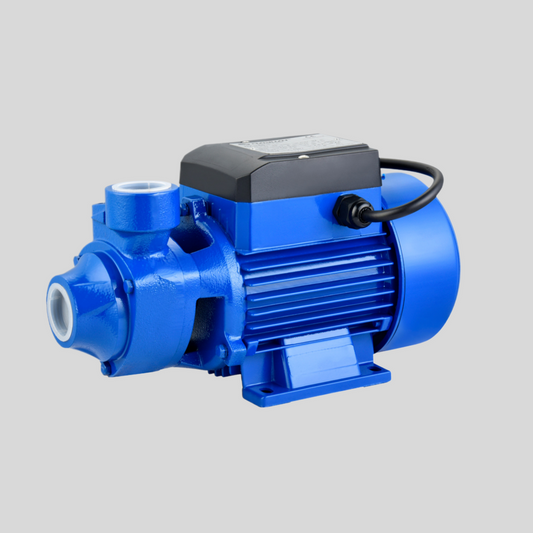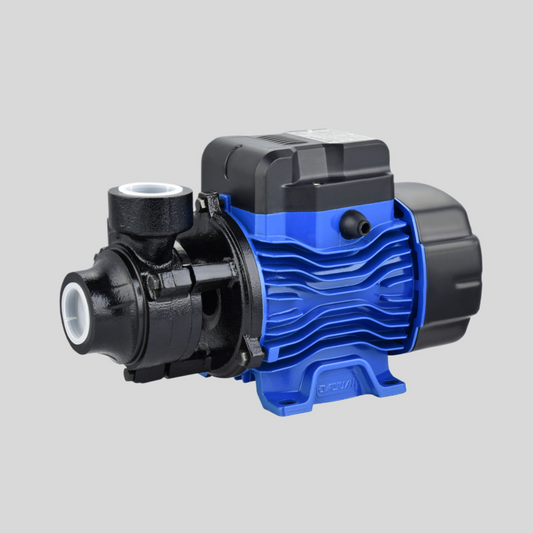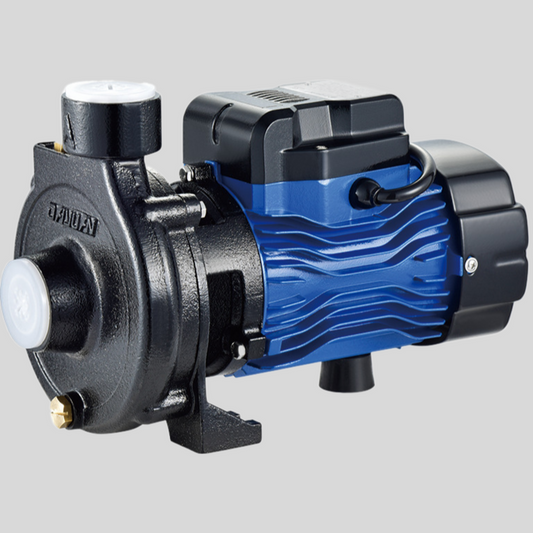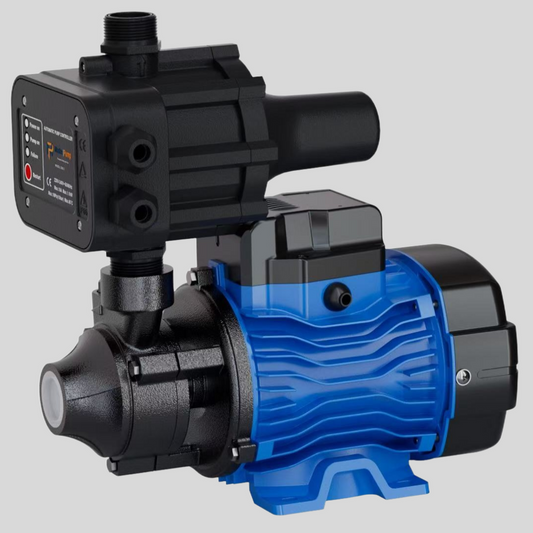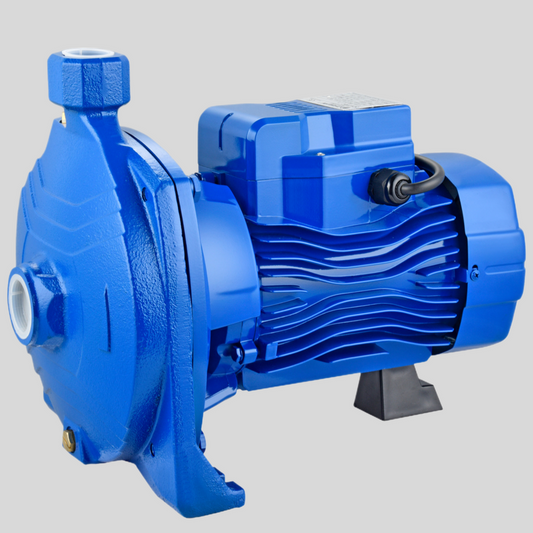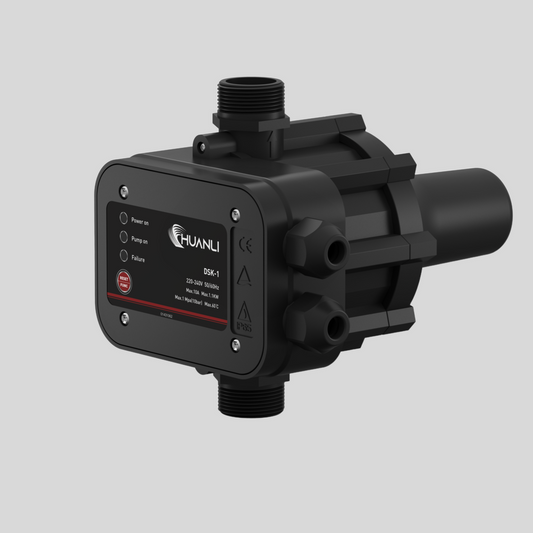-
DKm Micro Vortex Pump
Regular price R 0.00 ZARRegular priceUnit price / per -
DAYUAN DKm-B Micro Peripheral Pump from 0.37-0.75Kw/ Max. flow 3.3m³/h, Max. head 65m, Price from
Regular price From R 1,511.00 ZARRegular priceUnit price / perR 1,299.00 ZARSale price From R 1,511.00 ZAR -
DK Micro Vortex Pump
Regular price R 0.00 ZARRegular priceUnit price / per -
DAYUAN DKm-B Micro Peripheral Pump with Auto Pressure Control from 0.37-0.75Kw/ Max. flow 3.3m³/h, Max. head 65m, Price from
Regular price From R 1,997.00 ZARRegular priceUnit price / perR 1,299.00 ZARSale price From R 1,997.00 ZAR
Collapsible content
What is a Peripheral Pump?
A peripheral pump, also known as a regenerative turbine pump or vortex pump, is a type of centrifugal pump designed for medium-head, low-flow applications. Its key distinguishing feature is its impeller, which has numerous small, radial vanes on its periphery.
Unlike a standard centrifugal pump that directs water out in a single, efficient flow, a peripheral pump uses a unique regenerative principle. The liquid enters the impeller eye and is caught in the vanes. It then recirculates multiple times between the impeller vanes and the channel in the pump casing (the "peripheral channel") with each revolution. With each pass, the liquid receives an additional energy boost, building up a higher pressure.
Key Characteristics & How It Works?
- Mechanism: The liquid undergoes a helical or vortex-like path inside the pump casing. This repeated recirculation and energy addition are why it's called "regenerative."
- Performance:High Head (Pressure): Its main advantage. It can generate 2 to 4 times the pressure of a standard centrifugal pump of the same impeller diameter and speed.Low Flow Rate: It is not designed for high-volume transfer. Its flow rate is significantly lower than that of a centrifugal pump of similar size.
- Self-Priming: Most peripheral pumps have excellent self-priming capabilities. They can evacuate air from the suction line and create a vacuum to draw water up effectively, often better than many standard centrifugal pumps.
- Efficiency: Generally, they are less efficient than standard centrifugal pumps because of the internal recirculation and fluid friction losses. However, they are the right tool for the job when high pressure and low flow are needed.
What is the common applications of peripheral pumps?
Peripheral pumps are chosen specifically for jobs that require building significant pressure without needing a large volume of water.
- Domestic Water Pressure Boosting: Increasing water pressure for showers, faucets, and appliances in homes and buildings is their most common use.
- Hot Water Circulation: Circulating hot water in hydronic heating systems or domestic hot water recirc loops.
- Boiler Feed Pumps: Feeding water into boilers, as they can handle the hot water and the pressure required.
- Agricultural Spraying: Providing the high pressure needed for pesticide and herbicide sprayers.
- Car Wash Systems: Generating the high pressure needed for rinse and soap applications.
- Coolant Circulation: Moving coolant in industrial machining applications.
- Reverse Osmosis (RO) Systems: Boosting inlet water pressure to the required level for the RO membrane.
What is the difference between peripheral pump and centrifugal Pump in summary?
In short, think of a peripheral pump as a specialist for high pressure.
- Choose a peripheral pump when you need to create high pressure from a small, compact unit and your flow rate requirements are low (e.g., boosting home water pressure).
- Choose a standard centrifugal pump when you need to move large volumes of water at moderate pressures (e.g., draining a pool, transferring water from a tank).
They fill a crucial niche in the pumping world, offering a compact and effective solution for specific pressure-related challenges.
Related Products you may like
-
DAYUAN DKm-B Micro Peripheral Pump with Auto Pressure Control from 0.37-0.75Kw/ Max. flow 3.3m³/h, Max. head 65m, Price from
Regular price From R 1,997.00 ZARRegular priceUnit price / perR 1,299.00 ZARSale price From R 1,997.00 ZAR -
DAYUAN DKm-B Micro Peripheral Pump from 0.37-0.75Kw/ Max. flow 3.3m³/h, Max. head 65m, Price from
Regular price From R 1,511.00 ZARRegular priceUnit price / perR 1,299.00 ZARSale price From R 1,511.00 ZAR -
DAYUAN DCm-C Centrifugal Pump from 0.37-2.2Kw/ Max. flow 9m³/h, Max. head 45m, Price from
Regular price From R 2,882.00 ZARRegular priceUnit price / per -
Pressure Control DSK-1
Regular price R 645.00 ZARRegular priceUnit price / per

